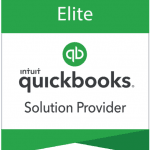Credit card processing is a fundamental aspect of financial management for businesses utilizing QuickBooks. Efficient credit card processing ensures seamless transactions, accurate record-keeping, and enhanced financial visibility. In this comprehensive guide, we’ll explore 15 best practices for credit card processing in QuickBooks, each accompanied by an explanation to help you optimize your payment workflows.
Additionally, we’ll highlight the importance of investing in a third-party QuickBooks Payment integration from Payygration to maximize efficiency and streamline your credit card processing operations.
1. Secure Customer Data Storage
Protecting customer credit card information is paramount. Ensure that all credit card data stored in QuickBooks is encrypted and tokenized to adhere to PCI DSS standards. By securing customer data, you minimize the risk of unauthorized access or breaches, safeguarding sensitive financial information.
See the benefits of accepting credit cards within QuickBooks.
2. Set Up Payment Terms
Establishing clear payment terms for credit card transactions is essential. Define payment due dates, late fees, and other relevant terms within QuickBooks invoices or sales agreements. Clear payment terms help prevent misunderstandings or disputes, ensuring that customers understand their payment obligations and adhere to agreed-upon terms.
3. Use Batch Processing
Streamline your credit card processing workflow by implementing batch processing in QuickBooks. Schedule regular intervals for batch processing to consolidate and submit multiple credit card transactions simultaneously. This practice helps optimize efficiency, reduces administrative overhead, and simplifies transaction reconciliation processes.
4. Implement Two-Factor Authentication
Enhance security measures by requiring two-factor authentication for credit card transactions within QuickBooks. Adding an extra layer of authentication helps protect against unauthorized access and minimizes the risk of fraudulent activities. By implementing two-factor authentication, you strengthen the security of your credit card processing operations.
5. Regularly Monitor Account Activity
Stay vigilant by regularly monitoring credit card account activity within QuickBooks. Keep a close eye on transaction logs, account balances, and payment statuses to identify any discrepancies or suspicious activities promptly. Timely monitoring allows you to detect and address issues before they escalate, ensuring the integrity of your financial records.
6. Leverage Payment Reminders
Utilize QuickBooks’ payment reminder feature to prompt customers to submit credit card payments on time. Set up automated reminders for overdue invoices or upcoming payment due dates to encourage timely payments. Payment reminders help improve cash flow and minimize the occurrence of late payments, contributing to overall financial stability.
7. Opt for Contactless Payment Options
Offer contactless payment options to customers to enhance convenience and safety. Enable NFC-enabled payment terminals or mobile payment solutions to accept contactless credit card payments. Providing contactless payment options not only improves customer satisfaction but also reduces physical contact during transactions, promoting health and safety.
8. Perform Regular Software Updates
Keep your QuickBooks software up to date with the latest patches and security updates. Regular software updates help address vulnerabilities and ensure that your credit card processing system remains secure and compliant with industry standards. By staying current with software updates, you mitigate the risk of security breaches and maintain the integrity of your financial data.
9. Maintain Data Backup Procedures
Implement robust data backup procedures to safeguard critical financial information stored in QuickBooks. Regularly back up credit card transaction data and account records to secure off-site locations or cloud storage. Data backup procedures help protect against data loss due to hardware failure, cyberattacks, or other unforeseen events, ensuring business continuity and resilience.
10. Optimize Payment Gateway Integration
Consider integrating a third-party payment gateway from Payygration with QuickBooks for enhanced functionality and efficiency. Payygration’s payment gateway integration offers advanced features such as automated recurring payments, customizable payment forms, and multi-currency support. By leveraging a trusted payment gateway integration, you can streamline credit card processing workflows and unlock additional capabilities within QuickBooks.
11. Conduct Regular Security Audits
Perform periodic security audits to assess the effectiveness of your credit card processing security measures. Review access controls, encryption protocols, and security configurations within QuickBooks to identify potential vulnerabilities or compliance gaps. By conducting regular security audits, you can proactively address security risks and ensure that your credit card processing environment remains secure and resilient.
12. Implement Fraud Detection Tools
Utilize fraud detection tools and algorithms to identify and prevent fraudulent credit card transactions. Enable fraud detection features within QuickBooks or integrate third-party fraud detection solutions to monitor transaction patterns and detect suspicious activities. By implementing robust fraud detection measures, you can minimize the risk of financial losses and protect your business from fraudulent activities.
13. Train Staff on Security Protocols
Educate your staff on credit card processing security protocols and best practices to mitigate the risk of human error or negligence. Provide comprehensive training on data security, password management, and phishing awareness to ensure that employees understand their role in maintaining a secure credit card processing environment. By investing in staff training, you empower your team to contribute to a culture of security and compliance within your organization.
14. Enable Automated Reconciliation
Simplify reconciliation processes by enabling automated reconciliation features within QuickBooks. Automate the matching of credit card transactions with corresponding invoices or sales receipts to streamline the reconciliation process. Automated reconciliation helps reduce manual effort, minimize errors, and ensure the accuracy of financial records, improving overall efficiency and productivity.
15. Monitor Credit Card Processing Fees
Regularly review credit card processing fees and assess the cost-effectiveness of your payment processing solutions. Compare fees from different payment processors and explore opportunities to negotiate better rates or terms. By monitoring credit card processing fees, you can identify potential cost-saving opportunities and optimize your payment processing expenses, maximizing the value of your credit card transactions.
Streamlining Credit Card Processing with Payygration
Implementing best practices for credit card processing in QuickBooks is essential for optimizing efficiency, enhancing security, and ensuring compliance with industry standards. By following these best practices, businesses can streamline their credit card processing workflows, minimize risks, and improve financial performance. Additionally, investing in a third-party QuickBooks Payment integration from Payygration can provide advanced features, enhanced functionality, and personalized support to further optimize credit card processing operations.
To get started with Payygration’s payment gateway integration for QuickBooks, call 866-949-7267 today and unlock the full potential of your credit card processing capabilities.


















